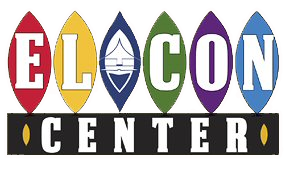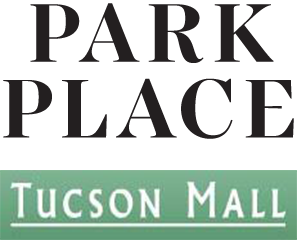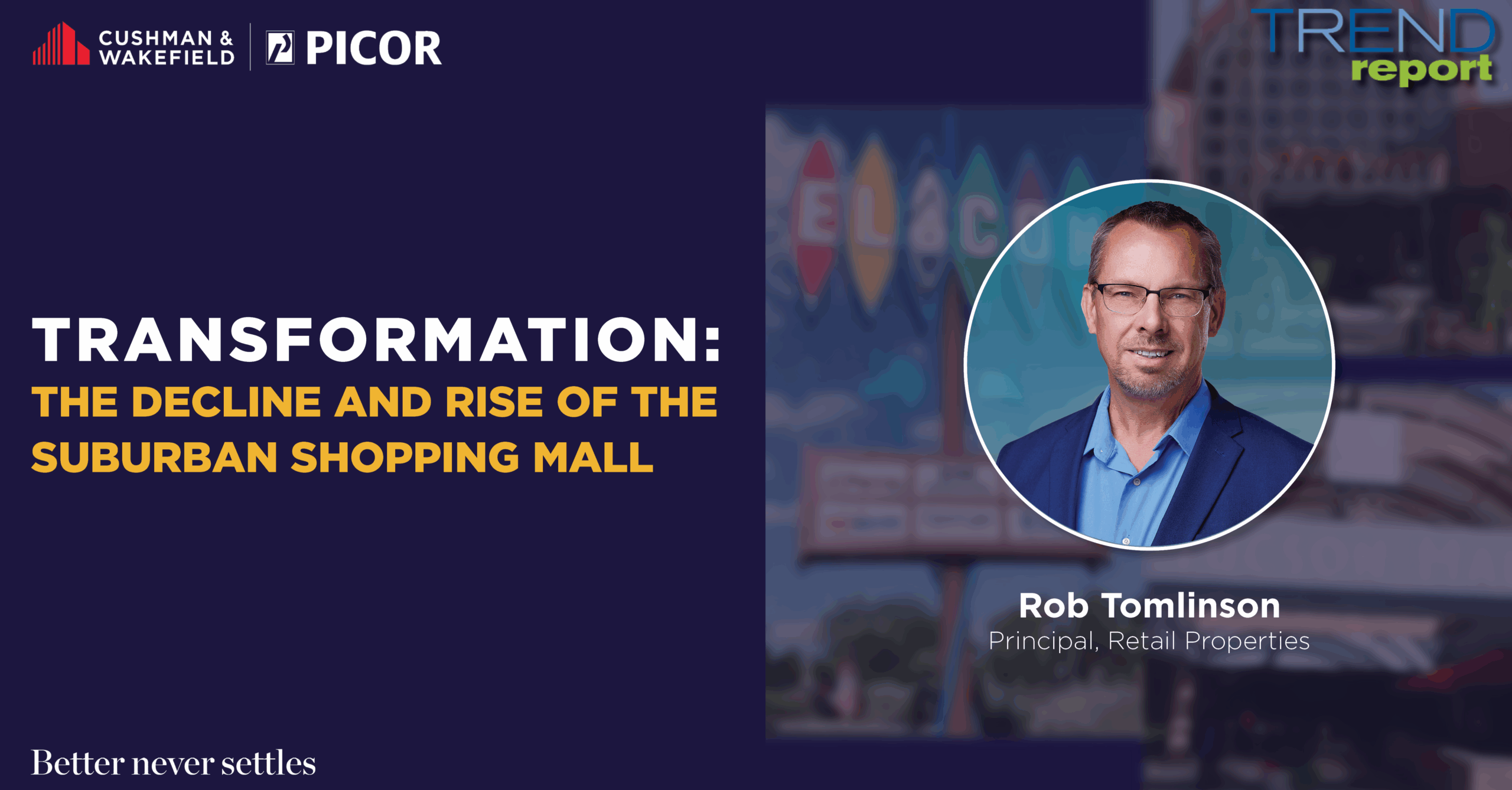The Trend Report, April 2025 Edition
 Shopping malls, once the cornerstone of American retail culture, are now providing some of the greatest opportunities to reset and reimagine the American city. From their advent in the mid-1950’s, American shopping malls have helped define and provide focus to the suburban living experience. Construction of shopping malls accelerated in the 60’s and peaked in the 1970’s and 80’s with an average of 200-300 malls per year. In the 1990’s construction slowed to an average of 140 malls per year as America reached a saturation point. New construction dwindled in 2006 down to only 2 new shopping malls built in the entire United States. In 2007, for the first time in 50 years, mall construction ground to a halt.
Shopping malls, once the cornerstone of American retail culture, are now providing some of the greatest opportunities to reset and reimagine the American city. From their advent in the mid-1950’s, American shopping malls have helped define and provide focus to the suburban living experience. Construction of shopping malls accelerated in the 60’s and peaked in the 1970’s and 80’s with an average of 200-300 malls per year. In the 1990’s construction slowed to an average of 140 malls per year as America reached a saturation point. New construction dwindled in 2006 down to only 2 new shopping malls built in the entire United States. In 2007, for the first time in 50 years, mall construction ground to a halt.
So, what caused the decline and fall of the great American suburban shopping mall? Department stores have always been the anchor tenants of the mall. Mall architecture revolved around having department stores at each node of the mall with smaller shops positioned in between with restaurants, food courts, theaters, and other entertainment options. When the department stores failed, the malls failed with them. The early 2000’s saw a rise in “category killer” mid-box (10,000-25,000 sq ft) retailers. OfficeMax, Staples, Borders, Barnes and Noble, Sports Authority and other specialized retailers were able to outperform traditional department stores within any given merchandise category. These mid-box retailers could offer lower prices and a wider selection than department stores. Additionally, off-price soft goods retailers such as TJ Maxx, Ross Dress For Less, Burlington, and similar retailers administered the “coup de gras” to department stores as they lost their traditional soft goods consumer base. In turn, the decline of the department store caused the decline of the American shopping mall. While online shopping has affected all forms of retail, it is important to note that in 2007, the year that mall construction halted, online retail sales were only 3.4% of all retail sales (US Census Bureau). Mid-box retailers in open air centers supplanted the enclosed shopping mall retail model.
Over the past decade and a half, a number of different revitalization strategies have been employed. In an effort to drive foot traffic, mall owners and operators have encouraged entertainment venues such as aquariums, live acting theaters, farmer’s markets, workout facilities, local “pop up” and seasonal retailers and just about anything else to pay the bills and keep the lights on. “Retailment”, the blend of retail and entertainment has been explored to its full extent and has not proven to be effective in changing the fate of our shopping malls. The age of the suburban shopping mall is over and the massive buildings, parking structures, and attendant development are no longer useful.
While may of us regret the loss of malls and the social interactions that they offered, these iconic properties now represent the greatest opportunity for us to reimagine and reinvent the American suburban living experience. Mall properties are very large (commonly 50-100 acres) and have commercial zoning. While commercial zoning obviously provides the opportunity for commercial uses, it also typically allows some very flexible and permissive design options for residential, office, sports, entertainment, and other uses. Additionally, mall properties are typically very well located on arterial roadways and close to freeways. These properties represent the most significant opportunity for truly impactful redevelopment that we are likely to see in our lifetimes.
Here in Tucson, we have four shopping mall properties with immense potential but varying present opportunities for redevelopment. Fractious ownership entities, lender issues and other factors are currently inhibiting progress on a couple properties but, where those shorter-term constraints do not exist, progress is being made and it is exciting to see how these properties will be transformed. Here is a brief thumbnail of what is happening with our four local mall properties:
 El Con Mall: The El Con Mall was more or less “de-malled” some time ago and transitioned to a power center. The move by then El Con ownership from enclosed shopping mall to power center came at a time when typical power centers had already reached their apex. The opportunity to instead transition to a more mixed-use format such as Kierland Commons (Scottsdale) or an open-air shop configuration such as Tempe Marketplace (Tempe) or San Tan Village (Gilbert) are opportunities that may still exist. The closing and demolition of the JC Penney building and the current efforts by Burlington to sublease a substantial portion of their space are heightening the need to embrace a more modern approach to this former mall and increase its relevance in the market.
El Con Mall: The El Con Mall was more or less “de-malled” some time ago and transitioned to a power center. The move by then El Con ownership from enclosed shopping mall to power center came at a time when typical power centers had already reached their apex. The opportunity to instead transition to a more mixed-use format such as Kierland Commons (Scottsdale) or an open-air shop configuration such as Tempe Marketplace (Tempe) or San Tan Village (Gilbert) are opportunities that may still exist. The closing and demolition of the JC Penney building and the current efforts by Burlington to sublease a substantial portion of their space are heightening the need to embrace a more modern approach to this former mall and increase its relevance in the market.
 Park Place Mall and Tucson Mall: These two properties are grouped together because they both face similar challenges. Both properties are in receivership at this time with Tucson Mall delinquency amounting to $181,493,337 and the Park Place Mall at $152,738,076 these properties are mired down in fractious ownership entities, receiverships, and, in the case of Tucson Mall, a ground lease. The acquisition of the Sears property at Park Place Mall by a partnership led by Evergreen Development is showing promise of positive transition with the recent signing of Cheeseburgers and Cold Beer and plans for multifamily development and self-storage. Matters stemming from receivership and debtor obligations will inevitably be worked out and both of these properties hold the promise of exciting re-imagining and are likely to have significant impact in both of their market areas.
Park Place Mall and Tucson Mall: These two properties are grouped together because they both face similar challenges. Both properties are in receivership at this time with Tucson Mall delinquency amounting to $181,493,337 and the Park Place Mall at $152,738,076 these properties are mired down in fractious ownership entities, receiverships, and, in the case of Tucson Mall, a ground lease. The acquisition of the Sears property at Park Place Mall by a partnership led by Evergreen Development is showing promise of positive transition with the recent signing of Cheeseburgers and Cold Beer and plans for multifamily development and self-storage. Matters stemming from receivership and debtor obligations will inevitably be worked out and both of these properties hold the promise of exciting re-imagining and are likely to have significant impact in both of their market areas.
![]() Foothills Mall: Foothills Mall is the local mall property that is least encumbered with limiting factors to redevelopment and repositioning. As a cohesive entity under the experienced control of Bourn Partners, Foothills Mall is well along the path of becoming Uptown (https://headuptown.com) an innovative mixed-use development on over 50 acres. When complete, Uptown will have 2,000,000 sq ft of building improvements comprising +/-800 residential units, over 2 dozen food and beverage concepts, approximately 400 hotel rooms, in addition to a public market and potential office space. With 6 different outdoor environments and cutting-edge design, Uptown will be Tucson’s first mall redevelopment and its success seems to be ensured.
Foothills Mall: Foothills Mall is the local mall property that is least encumbered with limiting factors to redevelopment and repositioning. As a cohesive entity under the experienced control of Bourn Partners, Foothills Mall is well along the path of becoming Uptown (https://headuptown.com) an innovative mixed-use development on over 50 acres. When complete, Uptown will have 2,000,000 sq ft of building improvements comprising +/-800 residential units, over 2 dozen food and beverage concepts, approximately 400 hotel rooms, in addition to a public market and potential office space. With 6 different outdoor environments and cutting-edge design, Uptown will be Tucson’s first mall redevelopment and its success seems to be ensured.
The most exciting opportunities to improve and enhance the modern American urban fabric lies in the redevelopment and repositioning of our suburban shopping malls. All over the US, these icons of retail are being innovatively transformed into exciting new environments serving their markets and communities in deeper and more meaningful ways than we had ever imagined. While we may feel nostalgic for the shopping mall experience, these new and innovative environments and experiences promise to significantly improve our suburban experience.

Rob Tomlinson has been a commercial real estate broker since 1996. His work on a wide variety of commercial projects coupled with his education in Urban Geography, Site Analysis, and Land Use Planning gives him a wealth of experience in the development process. He can be reached at rtomlinson@picor.com.





